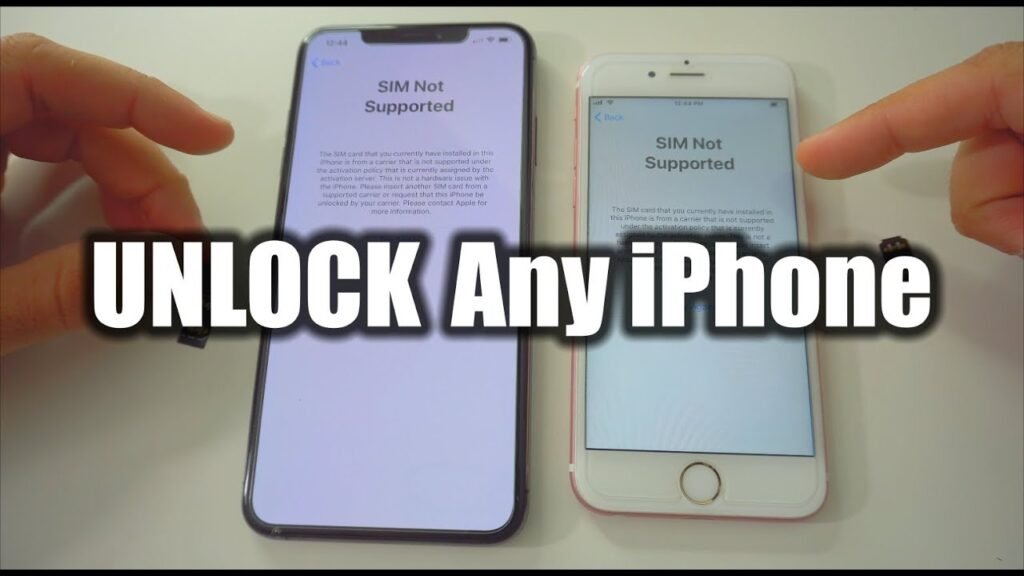Unlocking an iPhone can be an essential task for users wishing to switch carriers, travel abroad, or sell their device. This informative guide will walk you through the steps, reasons, and considerations for unlocking an iPhone, ensuring a smooth process from start to finish.
Understanding iPhone Unlocking
Before delving into the “how-to,” it’s crucial to grasp what unlocking an iPhone means. Essentially, a locked iPhone is restricted to a specific carrier’s network, meaning it cannot be used with another carrier’s SIM card without being unlocked. This is a common practice among carriers, who often lock devices to their networks as part of contractual agreements or payment plans.
Reasons to Unlock Your iPhone
- Switching Carriers: Unlocking allows you to switch to another carrier that may offer better rates or coverage.
- International Travel: Using local SIM cards while traveling can save on roaming charges.
- Resale Value: Unlocked iPhones generally have a higher resale value compared to locked ones.
Legal Considerations
It’s important to note that the legality of unlocking an iPhone can vary by country and the terms of your agreement with your carrier. In many places, however, it is perfectly legal to unlock your device, provided you have fully paid for it and met any contractual obligations with your current carrier.
How to Unlock Your iPhone
Step 1: Determine Your iPhone’s Lock Status
Before proceeding, you need to find out if your iPhone is already unlocked. A simple way to check is by inserting a SIM card from a different carrier. If the iPhone works with the new SIM card, it’s unlocked; if not, you’ll see a message indicating that the SIM is not supported.
Step 2: Contact Your Carrier
If your iPhone is locked, the next step is to contact your current carrier. Each carrier has its own set of requirements for unlocking, but generally, you’ll need to have paid off your iPhone and not have any outstanding bills. Carriers in many countries are obligated to unlock your phone free of charge or for a small fee, assuming you meet their conditions.
Carrier Unlocking Requirements
- Account Status: Your account must be in good standing, with no unpaid balances.
- Device Payment: The iPhone must be fully paid off.
- Contractual Obligations: Any contractual obligations, such as a minimum service period, must have been fulfilled.
Step 3: Provide Necessary Information
Your carrier will likely ask for several pieces of information to unlock your iPhone, including:
- IMEI Number: This is your iPhone’s unique identifier. You can find it by dialing *#06# on your iPhone or by going to “Settings > General > About.”
- Account Information: This may include your account number, phone number, and other verification details.
Step 4: Follow Carrier Instructions
After providing the required information, follow your carrier’s specific instructions. The process can vary, but it typically involves waiting a few days for the unlock to be processed. Some carriers may require you to restore your iPhone through iTunes to complete the unlock process, while others may automatically unlock it over-the-air.
Alternative Unlocking Methods
If you’re unable to unlock your iPhone through your carrier—for instance, if you purchased a second-hand iPhone that’s locked to a different carrier—you might consider third-party unlocking services. These services can often unlock iPhones for a fee. However, it’s crucial to research and choose reputable services to avoid scams.
Risks of Third-Party Unlocking Services
- Warranty Void: Using unauthorized services to unlock your iPhone may void any remaining warranty.
- Potential for Scams: Some services may not deliver on their promises, leaving you out of pocket.
- Possible Device Damage: Incorrect unlocking methods can potentially damage your iPhone or affect its functionality.
After Unlocking Your iPhone
Once your iPhone is unlocked, you can insert any carrier’s SIM card and set up your device. It’s a good idea to backup your iPhone before making any changes, including restoring it or updating the carrier settings. This ensures that your data is safe and can be easily restored if needed.
Conclusion
Unlocking an iPhone can open up a world of possibilities, from switching carriers to making international travel more convenient. By following the proper channels and ensuring you meet your carrier’s requirements, you can unlock your iPhone smoothly and legally. Remember to back up your data before making any significant changes, and consider the potential risks if opting for third-party unlocking services. With your iPhone unlocked, you’ll enjoy greater flexibility and potentially higher resale value in the future.
Frequently Asked Questions (FAQs)
1. How do I know if my iPhone is locked or unlocked?
You can check if your iPhone is locked or unlocked by inserting a SIM card from a different carrier. If your iPhone can make calls and access data with the new SIM card, it’s likely unlocked. Alternatively, you can contact your current carrier or check your device’s settings (for some iOS versions, under “Settings > General > About,” there might be an indication of your lock status).
2. Is it legal to unlock my iPhone?
In many countries, it is legal to unlock your iPhone, especially if you’ve paid for the device in full and have no outstanding contractual obligations with your carrier. However, laws vary by country, so it’s important to check the regulations in your jurisdiction.
3. How long does it take to unlock an iPhone?
The time it takes to unlock an iPhone can vary. Typically, once you’ve submitted a request to your carrier and provided all necessary information, it can take from a few hours to a few days. Carrier response times vary, so it’s best to ask your carrier for an estimated timeframe.
